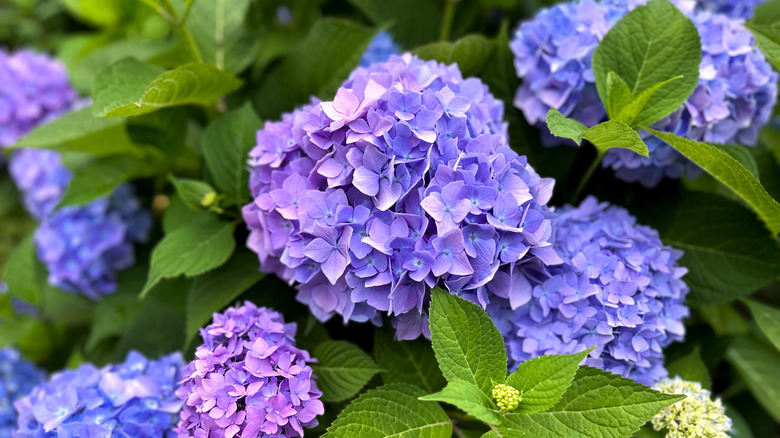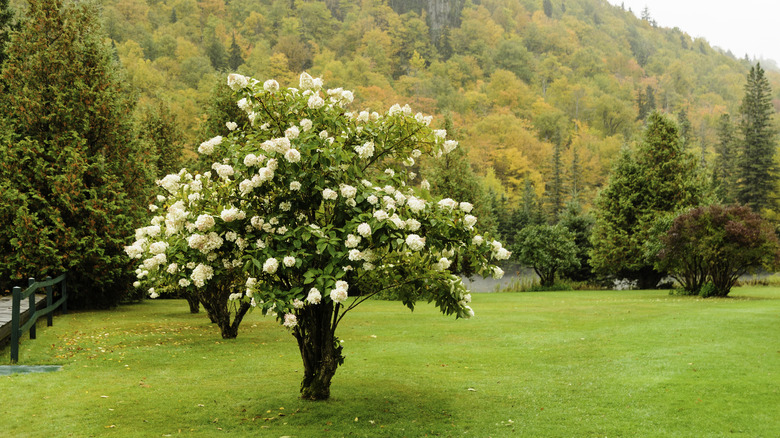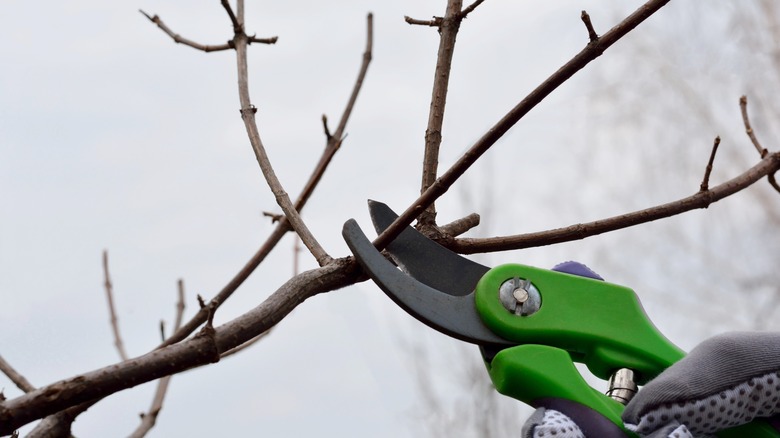How To Grow A Hydrangea Paniculata Shrub Into A Tree For A Stunning Landscape
Hydrangea plants can add a pop of color to any yard, and there are so many ways to adjust them for your garden. You can even trim the hydrangea paniculata shrub to look like a stunning tree. House Digest spoke exclusively with Melanie Rekola, a professional landscape designer, about how to create this gorgeous hydrangea paniculata tree for your own home.
Many people use the hydrangea paniculata variety to trim into a tree, but there are other varieties that work as well. "I think hydrangea paniculata is the best hydrangea variety to train as a tree form because they're woody shrubs that grow quite large — the perfect size for a small tree form," Rekola shared. "But another variety that would look great in tree form is native North American oakleaf hydrangea/hydrangea quercifolia."
How to train your Hydrangea Paniculata to look like a tree
Training your hydrangea paniculata to look like a tree sounds can be an exciting new project to begin. According to House Digest's exclusive interview with Rekola, gardeners should, "Start the pruning process with a grown shrub rather than taking a cutting to save time. Training hydrangea cuttings to grow in tree form adds several more years to the scope before they look good."
When pruning, follow these guidelines too. "Any lower stems/branches should be removed but also the entire canopy of the 'tree' should be trimmed to encourage more branching and blooms," Rekola said. "Always remove any dead or weak branches from this area too. And any tree should only be staked for a year because the tying can cause stress to the main trunk over time."
The disadvantages of turning your Hydrangea shrub into a tree
While a hydrangea tree will certainly make a statement in your garden (and you should definitely check out this gardening tip to ensure stunning hydrangea blooms), every gardening project comes with advantages and disadvantages. According to House Digest's exclusive interview with Rekola, you can't start this project anytime you want to. "Pruning should be done in late winter/early spring while the shrub is dormant (before the leaves flush out in springtime)," Rekola said. "This way, you'll keep the dry flower heads on for pretty winter interest."
This project will also take a lot of time. "Training a shrub to look like tree form takes time and patience," Rekola shared. "It won't look great for several years, but you'll certainly feel satisfaction once it gets there! And you'll save substantial cost too." Although it may be a time consuming task, your hydrangea tree will eventually be the prize of your garden. Make sure you properly take care of your hydrangeas so they last for years to come!


